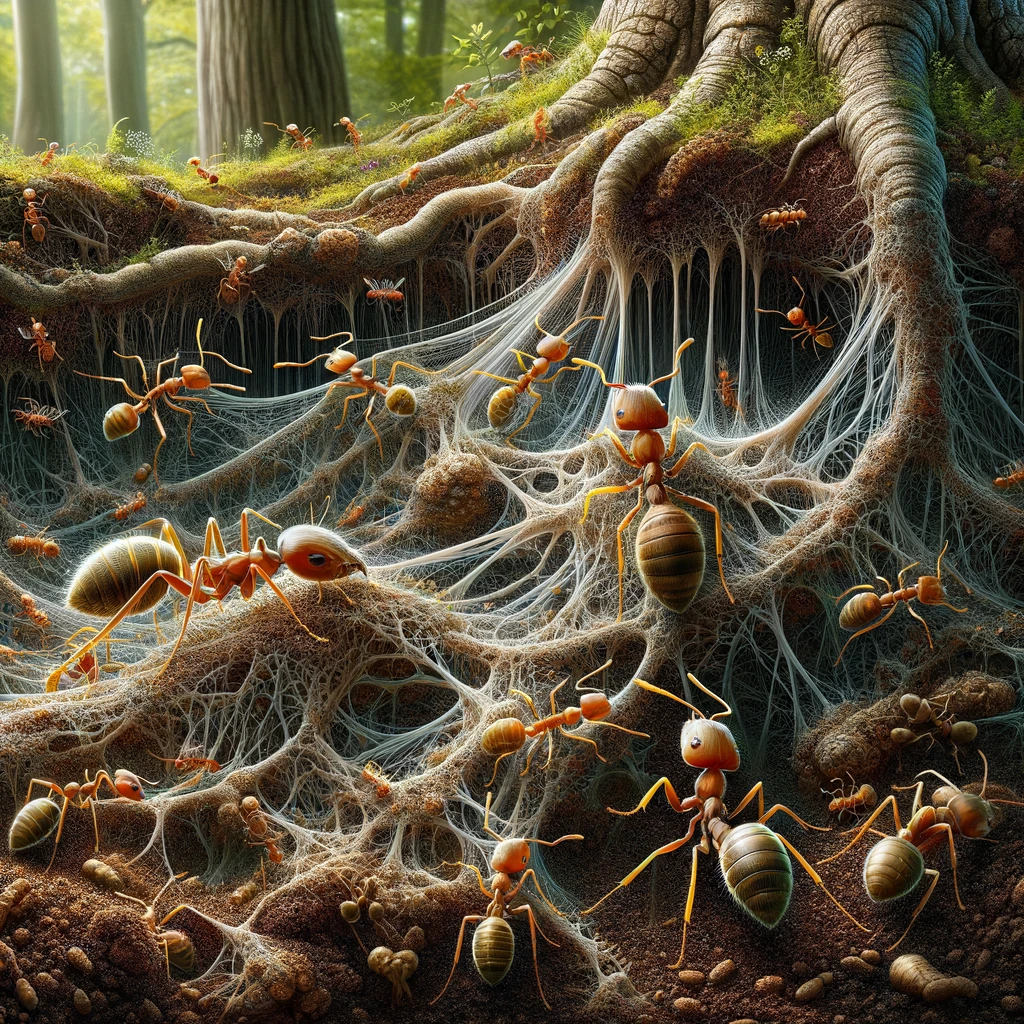Wood Wide Web: Mycorrhizal Network Restored After Interruption by Ants and Termites
Posted on January 23, 2024 • 2 minutes • 389 words
Table of contents
A recent research conducted by Ottawa University on the phenomenon of wood wide web has revealed some interesting findings. The wood wide web refers to the complex network of underground fungal threads that connect the roots of trees and plants. These fungi form a symbiotic relationship with the plants by exchanging nutrients and other vital compounds. This network is crucial for the survival and health of the plants.
The research focused on the effects of several species of ants and termites on the mycorrhizal network. The mycorrhizal network is the part of the wood wide web that connects the roots of plants with the underground fungal threads. The researchers observed that when some species of ants and termites disturbed the network by digging tunnels, the mycorrhizal links were restored within a matter of days. This discovery has significant implications for our understanding of the wood wide web and its resilience.
| Micorrhizal network, artistic interpretation |
|---|
 |
The researchers believe that the disturbance caused by ants and termites triggers a response in the plants, which leads to the restoration of the mycorrhizal network. This response is possibly related to the release of certain chemicals by the plants which attract the fungi to re-establish the network. This hypothesis is supported by earlier studies which have shown that plants can communicate with each other through chemical signals.
The findings of this research have important implications for the conservation of forests and other ecosystems. The wood wide web is a vital component of these systems, and its disruption can have cascading effects on the entire ecosystem. By understanding how the network responds to various disturbances, we can develop better strategies for its conservation and restoration.
References
- Common mycorrhizal networks provide a potential pathway for the transfer of hydraulically lifted water between plants
- Earthworms as conveyors of mycorrhizal fungi in soils
- Bacterial, fungal, and mycorrhizal communities in the soil differ between clearcuts and insect outbreaks in the boreal forest 50 years after disturbance
- Additive and synergistic effects of arbuscular mycorrhizal fungi, insect pollination and nutrient availability in a perennial fruit crop
- Is a specialist root-feeding insect affected by arbuscular mycorrhizal fungi?
- Interaction between foliar-feeding insects, mycorrhizal fungi, and rhizosphere protozoa on pea plants
- Positive interactions between mycorrhizal fungi and bacteria are widespread and benefit plant growth
- Processes underlying the effect of mycorrhizal symbiosis on plant-plant interactions
Share
Tags
Counters

